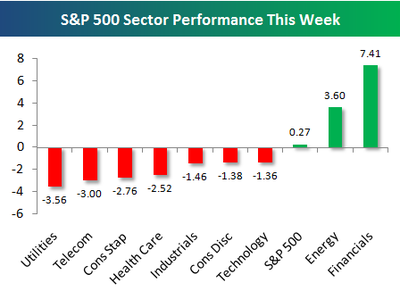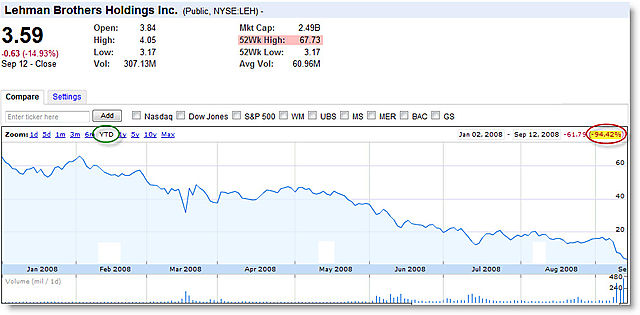This was a tough week for the markets. Strangely, it might soon prove to have been a good week for the markets as well.
So what is it going to take for the markets to finally bounce? History shows
that most intermediate or long-term bottoms are characterized by panic
selling, hopelessness, and people simply giving-up. If that is the standard, then we may be close.
Here is some of the evidence of the fear, uncertainty, doubt that often accompanies bottoms:
- This week reversed most gains from the prior week's rally and short-squeeze.
- The markets continue to flirt with lows for the year.
- Because of the volatility and gaps, trading simply hasn't been normal recently.
- The economy and the markets dominate news and popular culture.
- This week, the President of the United States basically said that
if a radical bail-out wasn't done, right now, it would damage our
economy – and many others across the globe.
However, as bad as the markets did last week, they held up
reasonably well considering how much bad news there has been and how
close to the edge things really were (or are). Also, while markets went
down, it was on lower volume than last week, and we didn't break last
week's low.
The Calm After the Storm. It's
also probably worth noting that, historically, periods of great
volatility are often followed by periods of much less volatility.
With that in mind, I do believe that the government will reach a
reasonable compromise to end the "Deal – or No Deal" situation very
quickly. It's also likely that this agreement and the liquidity that it
brings will give the markets some room to breathe and some fuel for a
meaningful rally.
On the other hand, there is a long way to go
from here to recovery. Some people see this as the end of the crisis.
At best, I see this as the end of the first step on the road to
recovery.
You Can't Bounce Until you Hit Bottom.
There are many corollaries in nature. This troubling time created a
clearing. Much of the fear, uncertainty, doubt, and baggage from past
mistakes are being wiped away. Firms are closing, the landscape is
changing, Wall Street and our economy will literally never be the same
again. And, yet, this kind of clearing is often the catalyst to new
beginnings and fast growth.
Noise Reduction.
When creating automated trading systems, one of the things that becomes
increasingly important is to recognize the difference between signal
and noise. Right now, there's a lot of noise. The markets, market
players, and even governments are spooked. Under those circumstances,
it doesn't take much to stir things up.
The bailout and worldwide
cooperation can be looked at as noise reduction. Temporarily, there
will be a forced and tenuous peace. The hope is that as things calm
down, people will make decisions from a stronger position (or at least
from a position that's less fearful than where they are now).
Remember, a journey of a thousand miles begins with one step. Here's to progress.





 As I write this, it looks like Lehman is filing for bankruptcy and that Merrill Lynch is getting sold to Bank of America. Futures are down.
As I write this, it looks like Lehman is filing for bankruptcy and that Merrill Lynch is getting sold to Bank of America. Futures are down.